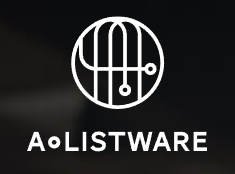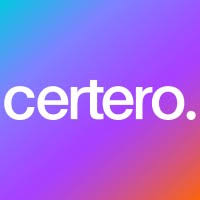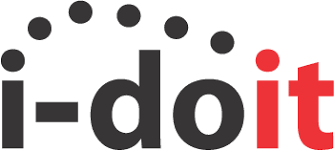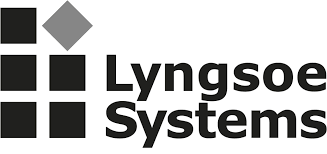IT asset tracking is no longer a static spreadsheet. It is a live system where devices, licenses, and sensors stay visible in real time. As estates expand and teams go hybrid, control slips fast. Then the costly questions show up: what do we have, where is it, who owns it, what changed yesterday. A solid platform answers without guesswork – tagging, automated discovery, movement history, clear reports.
This article reviews companies active across Europe in IT asset tracking. The focus is practical, not promotional: continuous discovery, full asset lifecycle, tight links to service work, and audit-ready reporting. Treat it as a field guide. Map it to your needs, environment, and change cadence. Then choose the solution that fits your day – not the other way around.

1. A-Listware
We are A-Listware, a technology partner focused on building reliable systems for tracking assets end to end. Our aim is simple – keep every item findable, accountable, and ready for action. We design inventories that stay current on their own, tie devices to real owners, and record each move or status change without piling tasks on the team. Scanners pick up QR or barcodes in seconds, discovery jobs feed new entries, and normalization removes duplicates so a single record tells the full story. We provide IT asset tracking in Europe and work with customers in Europe who need clean, searchable data that holds up during audits and day to day support. It’s practical work. Less chasing, more clarity.
Under the hood, we connect the catalog to the tools people already use. CMDBs pull structured attributes, service desks write back assignments, and finance gets predictable exports for cost and renewal checks. When devices travel, check in and check out flows preserve custody history. When software changes, install and usage signals adjust license positions. Maintenance plans and contract dates sit next to the asset record, not in a separate spreadsheet. That way a replacement, a loan, or a disposal updates the truth once and the rest of the stack follows along.
We keep the operational rhythm steady. Scheduled scans prevent drift. Small quality rules flag gaps before they snowball. Dashboards surface what matters now – overdue returns, aging builds, idle stock that should rotate. The result is an inventory that mirrors reality and stays calm under pressure. People find what they need. Audits move faster. And the register becomes a trusted part of daily work rather than a quarterly scramble.
Key Highlights:
- Entity based inventory that links each asset to owner, location, and lifecycle
- Discovery and normalization pipelines designed for steady data quality
- Operational tracking aligned with service, finance, and audit needs
- Proven delivery of IT asset tracking in the Europe with active customers in the Europe
Services:
- Automated discovery and normalization for hardware, software, and cloud items
- QR and barcode labeling with fast scan updates and custody history
- Ownership, contract, and lifecycle records with change logging
- License alignment using install and usage views for reclaim decisions
- Check in and check out flows for assignment, returns, and replacements
- Audit ready reporting and exports for finance, compliance, and service tools
Contact Information:
- Website: a-listware.com
- Email: info@a-listware.com
- Facebook: www.facebook.com/alistware
- LinkedIn: www.linkedin.com/company/a-listware
- Address: St. Leonards-On-Sea, TN37 7TA, UK
- Phone Number: +44 (0)142 439 01 40

2. Lansweeper
Lansweeper keeps sprawling technology estates visible and organized, from workstations and network gear to cloud resources and connected sensors. The platform scans automatically, identifies assets by fingerprints, and compiles a live inventory that updates itself without spreadsheet gymnastics. Records can be grouped, enriched with metadata, tied to locations, and tracked across lifecycle changes. That continuity helps answer simple questions fast: what exists, where it sits, who uses it, and what changed yesterday. The result is practical asset tracking that feeds audits, service workflows, license work, and daily decisions.
What makes them stand out:
- Always-on discovery feeding a current asset inventory
- Location and relationship views that reflect how estates actually work
- Unified records spanning IT, OT, IoT, and cloud instances
- Data prepared for audits, service processes, and license exercises
Services include:
- Automated device discovery and identification
- Hardware and software inventory with normalization
- Asset location and relationship mapping
- Change tracking and lifecycle history
- Inventory outputs for audit, license, and service operations
Contact Information:
- Website: www.lansweeper.com
- Facebook: www.facebook.com/lansweeper.network.inventory
- Twitter: x.com/lansweeper
- LinkedIn: www.linkedin.com/company/lansweeper
- Address: Fraterstraat 212 | 9820 Merelbeke, Belgium
- Phone: +32 52 696 696

3. Matrix42
Matrix42 structures asset data around the full lifecycle, so inventory, ownership, contracts, and usage sit in one place. Hardware, software, and cloud items are cataloged, then connected to costs, compliance, and service actions. That link between the register and operations keeps records close to reality and reduces drift over time.
On the application side, license and subscription views reconcile installs with entitlement and usage. Dashboards highlight gaps, while requests, changes, and retirement steps flow through defined processes. The same dataset supports endpoint tasks like packaging or patching, so tracking and action move together.
Why people choose them:
- Lifecycle tracking joined with service and endpoint operations
- License and subscription oversight for on-prem and cloud software
- Inventory and cost views aligned to compliance requirements
Core offerings:
- Centralized inventory for hardware, software, and cloud items
- Contract, cost, and ownership tracking across the asset life
- License reconciliation with usage insights
- Request, change, and retirement workflows linked to assets
- Integration with endpoint tasks such as packaging and patching
Contact Information:
- Website: www.matrix42.com
- E-mail: info@matrix42.com
- Facebook: www.facebook.com/Matrix42de
- Twitter: x.com/Matrix42_global
- LinkedIn: www.linkedin.com/company/matrix42
- Instagram: www.instagram.com/matrix42_global
- Address: Elbinger Straße 7 D-60487 Frankfurt am Main, Germany
- Phone: +49 69 6677 38220

4. Baramundi
Baramundi approaches visibility through unified endpoint management, where automated scans collect hardware and software details and keep them fresh. Inventory becomes the starting point for action, not a static list. Updates, packaging, and policies reuse the same records, so tracking reflects what is actually deployed at any moment.
Software views help surface versions, editions, and usage trends. Reporting templates shorten routine checks, from unauthorized devices to aging builds. Teams can standardize repeatable steps and reduce manual corrections, which usually improves audit readiness without extra overhead.
In everyday use, the cadence is stable. Scheduled discovery, clear reporting, and integrated tasks keep the picture accurate while environments shift. Less hand entry. Fewer blind spots. More repeatable work.
Standout qualities:
- Automated inventory that produces fast, repeatable visibility
- Endpoint actions integrated tightly with the asset register
- Reporting that highlights gaps, exceptions, and aging software
- Structured guidance for establishing reliable records
What they offer:
- Automated hardware and software discovery
- Centralized device and software inventory with license context
- Reporting on versions, usage, and unauthorized endpoints
- Update, packaging, and policy tasks tied to current inventory
- Governance templates and checklists for asset record quality
Contact Information:
- Website: www.baramundi.com
- E-mail: info@baramundi.com
- Facebook: www.facebook.com/baramundisoftware
- Twitter: x.com/baramundiWORLD
- LinkedIn: www.linkedin.com/company/baramundi-software-ag
- Instagram: www.instagram.com/baramundisoftware
- Address: Forschungsallee 3 86159 Augsburg Germany
- Phone: +49 821 567 08 – 0

5. Timly
Timly focuses on keeping asset records live and reliable so equipment, tools, and devices don’t drift off the radar. The platform assigns scannable identifiers, captures locations, and stores condition and ownership details that update as items move. Routine actions like check in and check out are logged alongside maintenance steps, fault notes, and calibration dates. Dashboards bring together what is due, what is missing, and what changed recently. In short, the register becomes practical day-to-day tracking rather than a static list that ages the moment it is exported.
What makes them unique:
- QR based identification tied to status, location, and condition
- Usage history recorded alongside maintenance and compliance data
- Clear overviews of due actions across assets and teams
Core offerings:
- Asset identification with QR labels and item profiles
- Check in and check out with user assignment
- Maintenance scheduling, defect reporting, and service history
- Location updates and movement logs
- Document storage for manuals, warranties, and certificates
- Exports and reports for audits and operations
Contact Information:
- Website: timly.com
- E-mail: contact@timly.com
- Twitter: x.com/TimlyAG
- LinkedIn: www.linkedin.com/company/timly-ag
- Phone: +41 44 500 35 23

6. Itemit
Itemit is built for teams that want quick onboarding and immediate visibility of what sits where. Assets receive a code, get scanned with a phone, and show up with status, custody, and recent edits. Small details add up in practice: pictures on the record, notes for the next user, reminders for upcoming checks. The result is a catalogue that reflects the real world, not an ideal inventory on paper.
Tracking expands naturally when items travel. Location stamps, user handoffs, and optional GPS help reconstruct a timeline, while simple reports answer familiar questions about availability and missing kit. Workflows remain lightweight, so teams keep using the system after day one rather than slipping back to ad hoc spreadsheets.
Why people like them:
- Fast setup with mobile scanning in minutes
- Clean records that mix IDs, photos, notes, and reminders
- Simple reporting to surface missing, overdue, or relocated items
- Optional GPS and location history for moving equipment
What they offer:
- Asset tagging with QR and barcode
- Mobile scanning for updates, handoffs, and quick edits
- Reminders for inspections, PAT checks, and service tasks
- Availability views and basic reservation flows
- Location history and movement tracking
- Reports for missing, overdue, or low-usage assets
Contact Information:
- Website: itemit.com
- E-mail: team@itemit.com
- Facebook: www.facebook.com/itemitApp
- Twitter: x.com/itemit
- LinkedIn: www.linkedin.com/company/itemit
- Phone: +44 (0) 1223 421611

7. CHEQROOM
CHEQROOM leans into equipment availability and accountability, especially for gear that changes hands often. Assets are labeled, scanned, and tied to bookings so the system knows who has what, until when, and in what condition. That booking mindset reduces bottlenecks: gear gets reserved, prepared, and returned with fewer surprises. Records keep the story straight with photos, notes, and fault flags that travel with the item.
For teams juggling many identical items, the catalog supports kits, accessories, and serial details without losing speed. Day-to-day, the interface encourages short actions rather than long forms, which tends to keep data fresh. Reports then translate all that activity into familiar operational views: what’s out, what’s overdue, what needs service.
Audits become less painful because the groundwork is continuous. Scans and returns create a traceable path, while maintenance entries and checklists provide a simple rulebook for care. Over time, patterns emerge around failures, turnaround times, and underused equipment, which helps trim waste without guesswork.
What they do well:
- Reservation first approach that connects assets to people and time
- Checkouts and returns recorded with scans, photos, and notes
- Kits and accessories handled cleanly for multi-part gear
Services cover:
- Asset labeling with QR or barcode and detailed profiles
- Reservations, checkouts, and returns with custody tracking
- Condition logging, fault reports, and service schedules
- Kitting and accessory relations for complex setups
- Availability views and overdue reporting
- Audit support with history trails and exportable records
Contact Information:
- Website: www.cheqroom.com
- Facebook: www.facebook.com/CHEQROOM
- Twitter: x.com/cheqroom
- LinkedIn: www.linkedin.com/company/cheqroom
- Instagram: www.instagram.com/cheqroom
- Address: Kliniekstraat 27A 9050 Gentbrugge, Belgium

8. Workwize
Workwize concentrates on the everyday reality of keeping equipment accounted for as people join, move, and leave. The platform assigns items to users, records status and location, and keeps a living history of handovers, returns, and refreshes. Barcodes or QR codes tie physical gear to clean records, while simple flows help teams recover devices, swap accessories, or update details without fuss. Dashboards surface what needs attention now, not next week, so inventory aligns with actual usage. The effect is practical tracking of laptops, peripherals, and home office kits across their life without reverting to scattered spreadsheets.
Why they stand out:
- User assignment and custody history that travel with each item
- Return and recovery flows that reduce lost gear
- Readable dashboards for overdue returns and pending actions
- QR and barcode options to keep scanning quick in the field
What they offer:
- User based asset assignment and transfers
- Check in and check out with return coordination
- Condition notes, photos, and status updates
- Labels, QR codes, and barcode scanning
- Inventory views for availability and replacements
- Exports and reports to support audits and handover tracking
Contact Information:
- Website: www.goworkwize.com
- LinkedIn: www.linkedin.com/company/work-wize
- Instagram: www.instagram.com/goworkwize
- Address: Leidsegracht 38 1016 CM Amsterdam, The Netherlands

9. Certero
Certero is built around unified visibility of hardware, software, and cloud resources, then layers governance on top. Discovery finds devices, profiles what runs on them, and normalizes the data so records stay consistent over time. Those records feed cost views and compliance checks, so the asset list is more than names and serials. It becomes the input for decisions about renewal, reclamation, and rationalization.
The platform also works at the level of process. Requests, ownership, contracts, and lifecycle events connect to each record, which keeps changes auditable and less reliant on manual updates. As assets move through environments, dashboards highlight drift or gaps, while scheduled tasks keep data fresh. The result is steady tracking that supports both operations and governance without heavy ceremony.
Key points:
- Consolidated discovery for devices and installed software
- Data normalization that keeps records consistent for long periods
- Lifecycle views that connect ownership, contracts, and status
- Dashboards that surface gaps, drift, and exceptions fast
Services include:
- Automated discovery and inventory across endpoints and servers
- Software recognition, normalization, and catalog alignment
- Ownership, contract, and cost tracking tied to assets
- License reconciliation with install and usage data
- Request, change, and retirement workflows for clean handovers
- Reporting for audits, renewals, and optimization decisions
Contact Information:
- Website: www.certero.com
- E-mail: info@certero.com
- LinkedIn: www.linkedin.com/company/certero
- Address: Cedarwood 2, Kelvin Close, Birchwood, Warrington, WA3 7PB, United Kingdom
- Phone: +44 (0) 1925 868970

10. Flexera
Flexera focuses on asset intelligence at scale. Inventory is collected from multiple tools, stitched together, and standardized, which turns noisy data into a usable source of truth. Hardware and software entries resolve to known products with consistent naming, so downstream decisions are based on comparable records, not guesswork. That same backbone serves cloud and hybrid estates, where visibility changes quickly and needs a steady reference.
Beyond the register itself, the platform emphasizes governance. Entitlements, installations, and usage are brought into one picture to support reclamation and rationalization. Alerts and scheduled checks point out licensing risk, unused software, or assets that fall out of policy. Teams get a feedback loop that is less about one time true ups and more about continuous housekeeping.
Practical operation matters here as well. Integrations keep connectors feeding the core dataset, while exports and APIs let other systems reuse the same truth. Over time, the effect compounds. Fewer shadow lists. Fewer mismatches. Cleaner audits.
What makes them unique:
- Inventory normalization that unifies data from many sources
- Hardware, software, and cloud visibility kept in one structure
- Entitlement and usage views that expose reclaim opportunities
Core offerings:
- Multi source discovery and consolidated inventory
- Product recognition with consistent naming and versions
- License position analysis with install and usage alignment
- Cost and entitlement tracking connected to asset records
- Alerts for non compliant usage, unused software, and policy drift
- Exports and APIs for CMDB, service, and reporting tools
Contact Information:
- Website: www.flexera.com
- Twitter: x.com/flexera
- LinkedIn: www.linkedin.com/company/flexera
- Instagram: www.instagram.com/weareflexera
- Address: Vorsetzen 41 20459 Hamburg, Germany
- Phone: +1 800 374 4353

11. EasyVista
EasyVista focuses on keeping asset records accurate as environments shift hour by hour. Discovery jobs sweep networks, normalize what they find, and populate a catalog where devices, contracts, and configurations sit in one place. The same records drive service tasks, so check in, replacement, or retirement updates the inventory rather than creating a side list. Dashboards call out missing data, overdue actions, and assets drifting from policy. Teams get a register that is searchable, auditable, and ready for change. It feels practical in daily use – quick edits, clear ownership, fewer surprises.
Why they’re worth a look:
- Discovery and normalization that keep asset data clean
- Lifecycle updates tied directly to service actions
- Dashboards that surface drift, gaps, and upcoming work
What they offer:
- Automated discovery and device identification
- Unified inventory for hardware, software, and configurations
- Ownership, contract, and lifecycle tracking with change history
- Service requests, replacements, and retirements linked to assets
- Auditing and reporting based on current inventory data
Contact Information:
- Website: www.easyvista.com
- Facebook: www.facebook.com/EasyVista
- Twitter: x.com/EasyVista
- LinkedIn: www.linkedin.com/company/easyvista
- Address: Maximilianstraße 13 80539 München, Germany
- Phone: +49 89 203 006 277

12. I-doit
I-doit centers on a structured CMDB where assets, relations, and documentation live together. Records describe devices, software, and dependencies, then link to rooms, racks, and services in a way that builds a map rather than a flat list. As items move or change, the graph updates, which makes routine questions easier to answer: what belongs where, who uses it, what changed last week. The result is tracking that favors clarity over decoration.
The platform treats documentation as part of the job, not an afterthought. Templates help standardize entries, while import tools reduce manual effort for large estates. Reports translate the model into operational views for audits or maintenance planning. Small habits add up – cleaner inputs, stronger inventory, fewer blind spots.
Standout qualities:
- Relationship modeling that turns inventory into a navigable map
- Structured templates to keep records consistent
- Imports and updates that cut down manual entry
- Reports aligned to audits and maintenance planning
Their focus areas:
- CMDB based inventory for hardware, software, and services
- Location and dependency mapping across rooms and racks
- Change and version history for evolving records
- Template driven documentation and data quality checks
- Reporting for compliance and operational overviews
Contact Information:
- Website: www.i-doit.com
- Facebook: www.facebook.com/itdokumentation
- Twitter: x.com/i_doit
- LinkedIn: www.linkedin.com/company/i-doit
- Instagram: www.instagram.com/i_doit.cmdb
- Phone: +49 (0) 211 – 699 31 0

13. RFID Discovery
RFID Discovery leans on tagging and real time reads to keep fast moving assets visible. Items receive RFID or barcode labels, handhelds and portals capture movement, and the system updates location and status without constant manual fixes. That mix is handy for shared equipment that travels a lot – carts, tools, kits – where checklists alone can’t keep up. The catalog stays current because the tracking layer does the heavy lifting.
Day to day, the workflow is straightforward. Tag, scan, watch the record update, then act on what the screen shows. Missing items, long idle assets, or gear due for inspection rise to the top in reports and alerts. Teams get fewer searches through storage rooms and more confidence in what is where right now.
Over time, patterns start to tell a story. Busy routes, slow zones, recurring loss points – all show up in the data and guide simple fixes like reassigning stock or adjusting service cycles. The goal is not a perfect maze of rules. It is steady visibility that improves decisions without adding noise.
Why people choose them:
- RFID and barcode options for flexible tagging
- Automated location updates from fixed and mobile readers
- Alerts and reports that highlight missing or idle items
Services cover:
- RFID and barcode labeling with device profiles
- Reader setup for portals, handhelds, and checkpoints
- Live location updates with movement history
- Inspection reminders, condition notes, and service logging
- Exception reporting for missing, overdue, and idle assets
- Integration hooks to reuse inventory data in other systems
Contact Information:
- Website: www.rfiddiscovery.com
- Twitter: x.com/RFIDDiscovery
- LinkedIn: www.linkedin.com/company/rfid-discovery
- Address: Suite 611 Milton Keynes Business Centre Foxhunter Drive Milton Keynes MK14 6GD England
- Phone: +44 208 102 1883

14. Lyngsoe Systems
Lyngsoe Systems delivers traceability built around RFID and sensor data so assets don’t slip through the cracks. Items receive smart labels, readers capture movement, and the platform updates identity, location, and condition without constant manual edits. Check in, handover, and return events are recorded next to service notes, which keeps the register useful for both operations and audits. Dashboards flag overdue tasks and missing items, while reports show usage patterns that help redeploy idle stock. Integrations feed and reuse the same dataset, so inventories, maintenance tools, and service desks stay aligned. The end result feels steady and pragmatic – clear records, fewer blind spots, quicker finds.
What makes them unique:
- RFID centric tracking with fixed portals and mobile readers
- Event history that joins movements with service and custody data
- Alerts and reports that surface missing, overdue, or idle assets
Core offerings:
- RFID labeling and device profiling for high value items
- Automated location updates through gates, shelves, and handheld scans
- Handover, return, and loan workflows tied to named users
- Maintenance scheduling with condition notes and attachments
- Exception reporting for lost, overdue, and low usage assets
- Data exchange with CMDB, service desk, and analytics tools
Contact Information:
- Website: lyngsoesystems.com
- E-mail: info@lyngsoesystems.com
- Facebook: www.facebook.com/LyngsoeSystems
- LinkedIn: www.linkedin.com/company/lyngsoe-systems-corporate
- Address: Lyngsoe Allé 3 9600 Aars, Denmark
- Phone: +45 96 980 980

15. Sewio
Sewio specializes in real time location using ultra wideband, which means fast moving assets can be monitored with precise indoor positioning. Anchors and tags form a live grid, readings are processed in milliseconds, and the map shows where equipment sits or travels right now. Accuracy and refresh rates support use cases where barcodes lag behind – tool pools, mobile kits, carts, forklifts. The platform stores tracks, events, and dwell time, so the inventory tells a story rather than a snapshot.
Operationally, the setup is practical. Anchors mount on ceilings or walls, tags wake on motion, and software translates signals into coordinates and timelines. Rules trigger alerts for unauthorized moves or long idle periods, while heatmaps highlight crowded zones and slow corners. Over time, those small insights reduce searching, cut bottlenecks, and make stock placement less of a guess.
Standout qualities:
- UWB positioning for sub room visibility at high refresh rates
- Live maps and trails that reveal movement, dwell, and handovers
- Rules and alerts for out of bounds or overdue returns
- Visual analytics that expose choke points and underused space
Services cover:
- Design and deployment of UWB anchors and tags for asset fleets
- Live positioning with location history and playback
- Zones, rules, and notifications for custody and movement control
- APIs and connectors to reuse coordinates in inventory systems
- Dashboards, heatmaps, and reports for placement and utilization
- Maintenance, battery, and device health monitoring for tags
Contact Information:
- Website: www.sewio.net
- E-mail: sales@sewio.net
- Facebook: www.facebook.com/SewioNetworks
- Twitter: x.com/SEWIOnet
- LinkedIn: www.linkedin.com/company/sewio-networks-s-r-o-
- Instagram: www.instagram.com/sewionet
- Address: Purkynova 71/99 612 00 Brno, Czech Republic
- Phone: +420 725 300 336
Conclusion
The picture is clear: IT asset tracking now spans IT, OT, and IoT, bridging software inventories with the physical world. You see auto discovery, data normalization, QR and barcodes, RFID, even UWB for precise positioning. The value is not a static list, but a living register fed by events that supports audits, service, licensing, and day to day work.
Your choice of partner decides whether that register stays alive. Check discovery breadth, normalization quality, lifecycle workflows, and links to real processes. Integrations with CMDB and the service desk matter, as do transparent evidence, security, scalability, and Europe based support. Look for the usual artifacts: playbooks, reports, change logs, and clear ownership for custody and returns.
Keep it practical. Start with a baseline and priorities, then pilot where the mess is worst. Set metrics: record accuracy, time to find, loss rate, audit readiness. Define custody and movement, training, and onboarding. Let records update through action, not afterthought. Small rituals, regular checks, and simple rules deliver steady results without extra noise.


